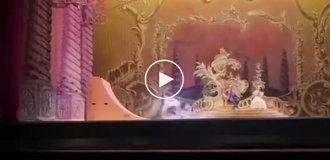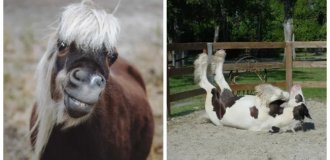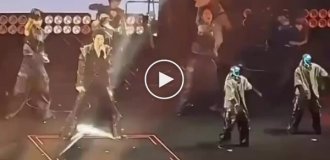A selection of extinct dog breeds that will never come back (15 photos)
Today there are simply a huge number of different dog breeds. Their number exceeds a hundred! And each dog is unique not only in appearance, but also in character. However, there could be more dogs, since many breeds no longer exist. The reasons are different. This is partly the fault of man, but various circumstances that we could not influence also played a role. But thanks to a few photos and information, we at least have the opportunity to see what these breeds looked like and what their unique features were.
Alpine Mastiff 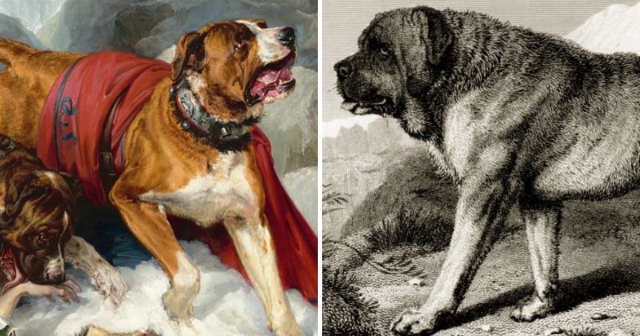
It is the ancestor of modern mastiffs and St. Bernard. These huge dogs (and their weight, for a second, reached almost 150 kilograms) were used to rescue people caught in an avalanche. The animals had an excellent sense of smell and could easily find a person even under significant rubble. It is believed that the breed appeared in Northern Europe before 500 BC.
Norfolk Spaniel 
Officially, the breed ceased to exist after 1903. According to descriptions, the Norfolk Spaniel was a large cocker spaniel that was difficult to train, but was an excellent hunter and loyal friend.
Non-curly black and white or liver and white coat, fairly heavy body and legs longer than other field spaniels but shorter than Irish water spaniels, deep chest with long sloping shoulders and strong back and loin, and characteristic spaniel features , such as floppy ears.
Medellan 
Medelian is an ancient Russian breed of dog. As a rule, they were used for hunting bears. The Medellans were so large and strong that they could drive down a predator single-handedly. Their height at the withers was about 120 centimeters, and their weight reached more than 100 kilograms.
The Medellian was an incredibly valuable breed of dog. For one puppy they could demand a rare breed of horse, jewelry or fabric. The breed was banned in the 1860s, and after the revolution that occurred in 1917, traces of the Medellians were completely lost.
The Russian writer Alexander Kuprin had one of these dogs. He owned a dog of the Medellian breed named Sapsan (photo on the right).
Dupuy's marriage 
This breed was one of the oldest types of French pointers, which worked well in the field and on the water. After the French Revolution, the number of these dogs began to decline rapidly. Approximately died out in the 1960s.
St. John's Water Dog or Lesser Newfoundland 
It is believed that the breed originated from a mixture of English, Irish and Portuguese working dogs. Her homeland is the island of Newfoundland.
These dogs were of medium size, strong build, dark in color, with clearly visible white spots on the chest, paws and face. Small Newfoundlands were highly valued by fishermen, as they helped get fish out of nets and return them back to the boat. They became extinct around the 1980s.
English white terrier 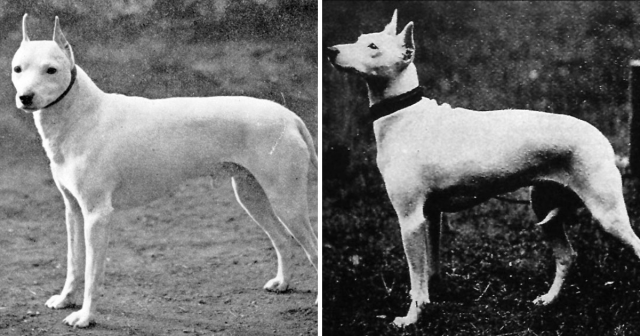
The breed has existed in Great Britain since the late 18th century. Thanks to her, other varieties of dogs appeared, such as the Fox Terrier, Jack Russell Terrier, Sealyham Terrier, as well as the Boston Terrier and Rat Terrier.
Turnpit or trochanter dog 
The spit dog is a unique breed that was bred for the specific task of turning a spit. In the Middle Ages, one of the main dishes of British cuisine was meat roasted over an open fire. To prevent it from burning or remaining raw, it had to be constantly rotated. For this purpose, they came up with a special mechanism (wheel), in which a small dog served as the engine. She ran around the wheel, and the rotation was transmitted to the spit.
The breed was distinguished by its endurance, strong build and small size. Also, such dogs were used not only for work in the kitchen, but also on butter churns.
Hawaiian poi dog 
This is an ancient breed that was once brought to Hawaii.ky islands. The Hawaiian poi dog was well-fed and sedentary, and also had a very small size. She was distinguished by her friendly disposition and devotion to her owners.
Dalbohund 
An extinct breed of dog originally from Sweden that was used to guard livestock. These were large, heavy dogs with long and fluffy hair.
Cordoba fighting dog 
The ancestors of the Cordoba fighting dog were the mastiff, boxer, bulldog and bull terrier. The breed was bred for dog fighting in Argentina.
Throughout the history of their existence, these dogs have never lost a fight to representatives of another breed. In the 1920s, dog fighting was banned. The Cordoba fighting dog was never able to socialize, as a result of which the breed was no longer bred as dangerous to humans and incapable of becoming a pet.
Argentine polar dog 
The Argentine Polar Dog is a breed developed by the Argentine Army as a sled dog. The dogs were used on military bases in Antarctica. The dog appeared after crossing a Siberian Husky, an Alaskan Malamute, a Manchurian Spitz and a Greenland dog. The breed became extinct in 1994 due to the movement of dogs from Antarctica to Argentina. Forty-eight years spent in one climate and the loss of natural immunity became a death sentence for the breed.
Bullenbeiser 
The Bullenbeiser or bulldog is an ancient breed of dog. Bulldogs are descended from Assyrian war dogs. Bullenbeiser was used to reduce the number of bison. And when the goal was achieved, the popularity of the breed sharply declined until it completely disappeared. The Bullenbeiser is also the progenitor of modern boxers.
Cumberland Sheepdog 
The Cumberland Shepherd was an incredibly hard-working herding dog. The breed, distinguished by its outstanding intelligence, helped herd cattle, goats and sheep. The Cumberland Shepherd is believed to be one of the ancestors of the Australian Shepherd. The last mention of the breed was in 1948.
Dog Sakhtu 
The Sahtu breed was domesticated by the Indian tribe of the same name, living in the territory of modern Canada. According to scientists, these dogs were most likely descendants of wolves. Sahtu practically did not bark and were distinguished by excellent hunting qualities. The breed disappeared in the 19th century due to the inexorable and sharp decline in the number of the tribe in which it was bred.
Bonus: Sakhalin Husky 
It is considered a virtually extinct dog breed. It was bred by the aboriginal Nivkhi people, who live in Sakhalin. The animal is distinguished by incredible endurance and courage, and is used in sea animal hunting.


